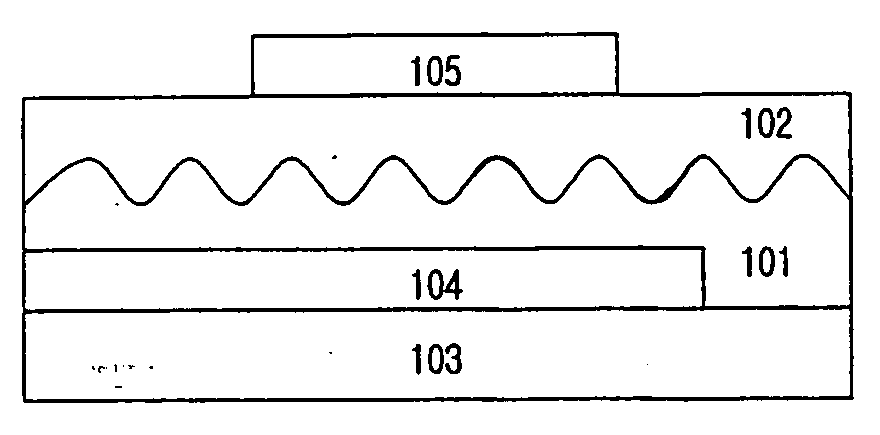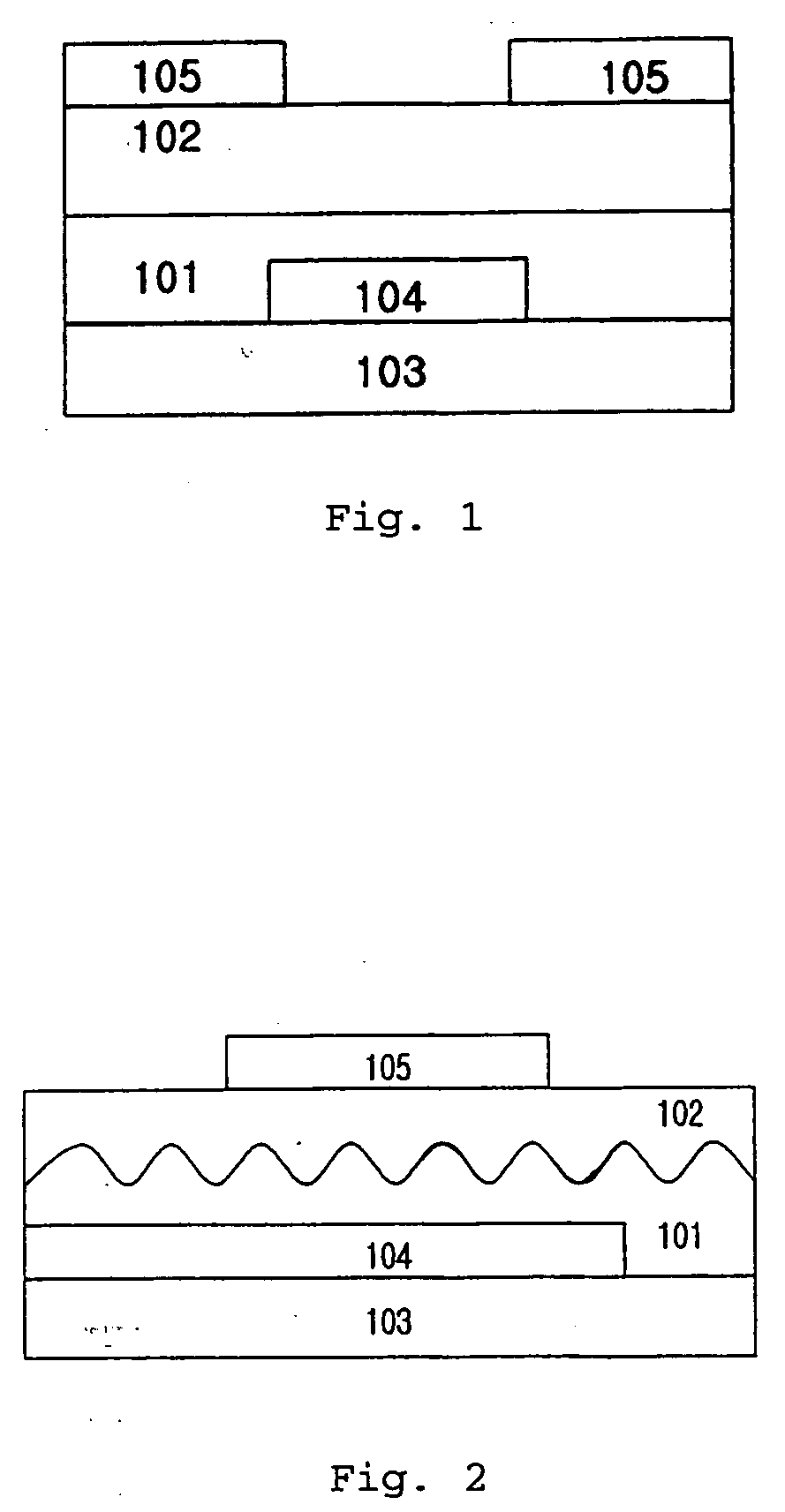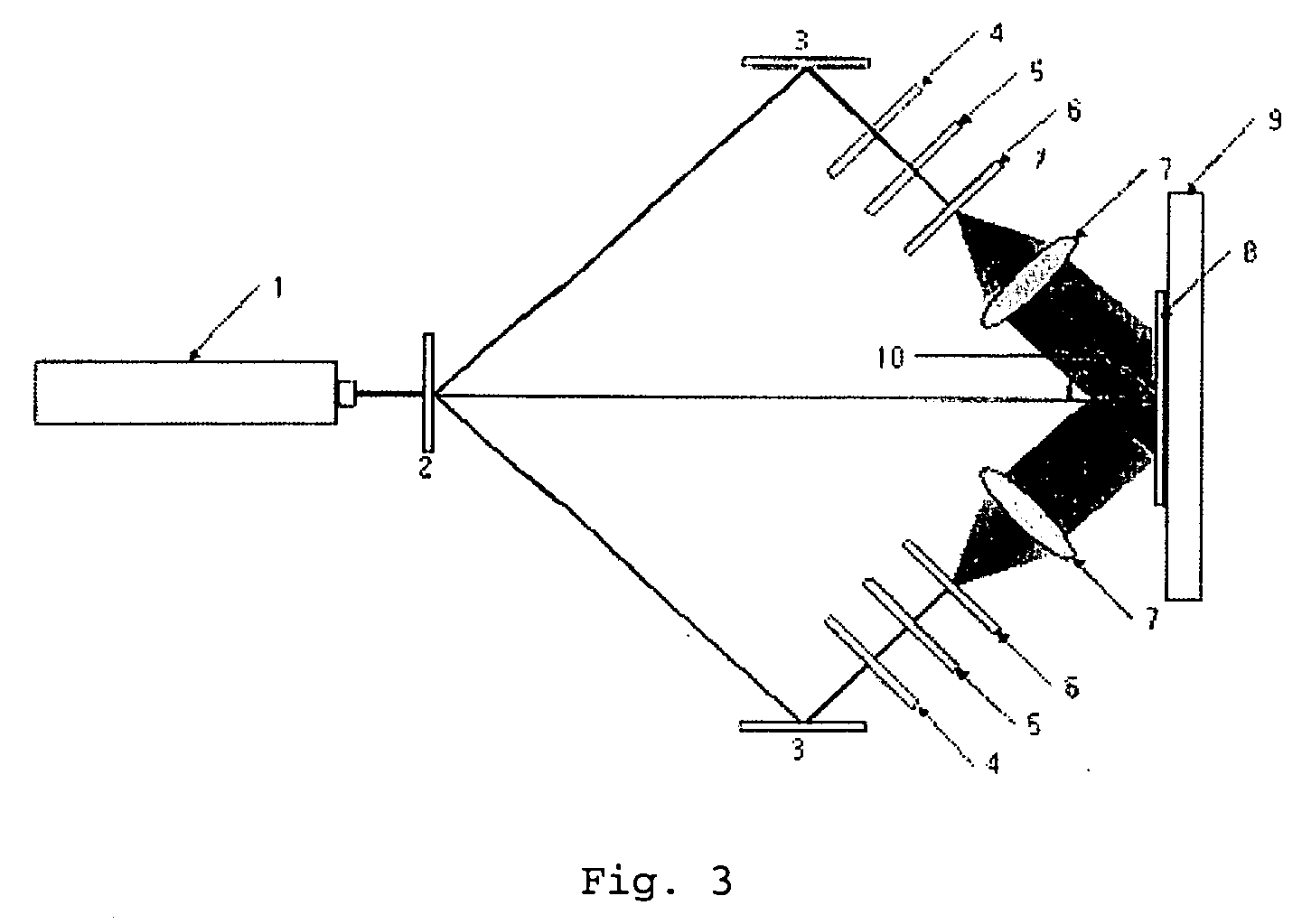Organic thin film transistor enhanced in charge carrier mobility by virtue of surface relief structure
a thin film transistor and surface relief technology, applied in transistors, solid-state devices, thermoelectric devices, etc., can solve the problems of reducing charge carrier mobility, and inferiority of organic insulating layers
- Summary
- Abstract
- Description
- Claims
- Application Information
AI Technical Summary
Benefits of technology
Problems solved by technology
Method used
Image
Examples
example 1
Formation of an Organic Insulating Layer of Surface Relief Structure
Onto a silicon substrate where a gate electrode was previously deposited, a 10 wt % solution of poly(4-nitrophenylazophenyloxylpentyl methacrylate-co-hydroxyethyl methacrylate) (Mw=35,000, MWD=2.5) in cyclohexanone was applied by spin coating to a thickness of 500 nm. The solvent was evaporated by drying the coated substrate at 100 □ for 10 minutes. The dried substrate was exposed to light having a wavelength of 488 nm by the use of a laser interferometer with an Ar+ laser. The incident angle of the laser beam was adjusted to 50° to afford a mono-axial lattice pattern having an interval period(Λ) of 500 nm and a depth of 50 nm. FIGS. 4a and 4b show AFM images of the resulting organic insulating layer.
example 2
Fabrication of an Organic TFT Device Using an Organic Insulating Layer of Surface Relief Structure
Onto the organic insulating layer of surface relief structure obtained from Example 1, a 1 wt % solution of poly(dioctylfulorene-co-bithiophene) in toluene was applied by spin coating to a thickness of 70 nm. The solvent was evaporated by drying the coated substrate at 100 □ for 30 minutes. On the resulting organic active layer were deposited source / drain electrodes by the use of a shadow mask having a channel length of 100 μm and a channel width of 2 mm to afford an organic TFT device. The direction of the channel length was equal to that of the major axis of the surface relief structure of the organic insulating layer.
example 3
Variation of the Electronic Properties of the Organic TFT Devices According to the Direction of the Surface Relief Structure
Two organic TFT devices, in which the major axis of the surface relief structure and the S-D channel were arrayed in the direction as shown in FIGS. 5a and 5b, were fabricated according to Examples 1 and 2 above. The current-transfer curves and charge carrier mobility curves of these devices were plotted in FIGS. 6 and 7, respectively. As a control, the current-transfer curve and charge carrier mobility curve of the device fabricated in the above Comparative Example were plotted simultaneously therewith.
As can be seen from FIGS. 6 and 7, device (II), in which the major axis of the surface relief structure and the S-D channel are parallel to each other, exhibited superior charge carrier mobility to the device (I), in which the major axis of the surface relief structure and the S-D channel are perpendicular to each other. On the other hand, device (I) exhibit...
PUM
| Property | Measurement | Unit |
|---|---|---|
| threshold voltage | aaaaa | aaaaa |
| threshold voltage | aaaaa | aaaaa |
| dielectric constant | aaaaa | aaaaa |
Abstract
Description
Claims
Application Information
 Login to View More
Login to View More - R&D
- Intellectual Property
- Life Sciences
- Materials
- Tech Scout
- Unparalleled Data Quality
- Higher Quality Content
- 60% Fewer Hallucinations
Browse by: Latest US Patents, China's latest patents, Technical Efficacy Thesaurus, Application Domain, Technology Topic, Popular Technical Reports.
© 2025 PatSnap. All rights reserved.Legal|Privacy policy|Modern Slavery Act Transparency Statement|Sitemap|About US| Contact US: help@patsnap.com



